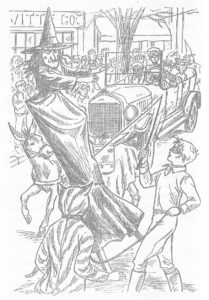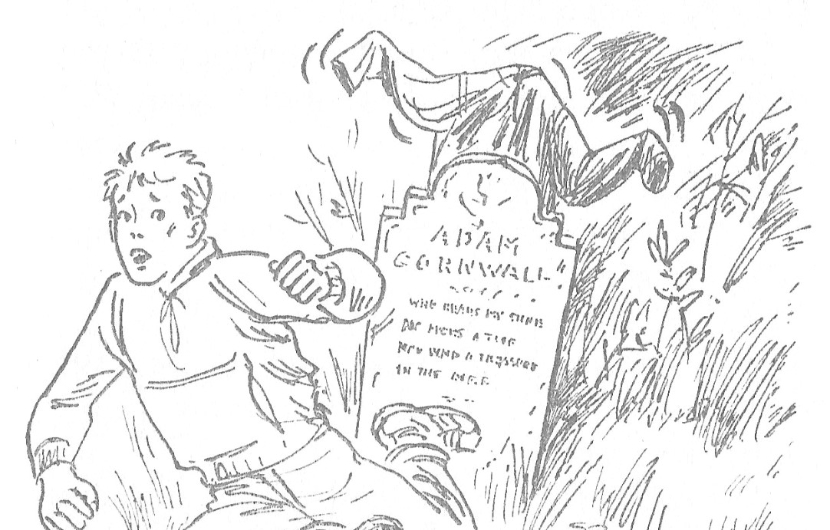The Happy Hollisters love spooky mysteries, so it’s no surprise that Halloween is one of their favorite holidays! The Happy Hollisters and the Mystery of the Golden Witch has all the elements of a classic Halloween tale, complete with witches, pumpkins, apple cider, and costumes. The book is available in paperback, Kindle, and audiobook formats, and now is the perfect time to learn more about the history of the spookiest holiday of the year.
Halloween’s origins can be traced back to the ancient Celts, who celebrated a festival called Samhain almost 2,000 years ago. Samhain (pronounced sow-in) marked the end of the harvest season and the beginning of winter, and it was said to be a time when the boundaries between our world and the world of the dead became blurred. During Samhain, it was believed that the souls of the dead returned to earth, so we can thank the ancient Celts for the eerie origins of Halloween.
By 43 A.D., the Roman empire had conquered most Celtic territory, and Romans began to blend their own unique traditions with some aspects of Samhain. This included a fall festival called Feralia, which included a day to honor Pomona, the goddess of fruits and trees. Pomona’s symbol was an apple, which may have inspired the tradition of bobbing for apples (or “ducking” for apples, as the Hollisters called it).
Halloween didn’t make it to the United States until much, much later, and though it was originally met with some frowns by strict religious groups like the Puritans, it became a popular holiday by the late 1800s. Back then, people celebrated Halloween with parties that included fall foods, games, and fun costumes. Halloween had mostly become a secular holiday and lost most of the original superstitious and religious undertones that originated with the ancient Celts and Romans.
But while Halloween lost some of its original aspects, it also gained some exciting new traditions—including the introduction of trick-or-treating, which became a popular part of Halloween celebrations in the first half of the 1900s. Believe it or not, we might actually have tricksters like Joey Brill to thank for giving us trick-or-treating! In the early 1900s, town-wide parades and festivities were frequently interrupted by vandals, and trick-or-treating was created as an alternative activity to placate young mischief-makers. Halloween is still associated with trouble-making, though, and particularly in parts of New Jersey, Pennsylvania, and Michigan, the night before Halloween is referred to as Mischief Night, often involving fireworks, smashing pumpkins, and other Joey Brill-approved activities.

Today, Halloween is the second most-popular holiday in the United States, and similar holidays are celebrated around the world, like Dia de los Muertos, the Mexican festival honoring the dead. Our modern celebrations still incorporate many earlier traditions, like decorating with pumpkins, bobbing for apples, drinking apple cider, and of course, dressing up in scary costumes and giving up tricks in exchange for tasty treats.
With origins that are both spooky and sweet, it’s makes sense that so many people love Halloween—and why the Halloween season is a great backdrop for a Happy Hollisters mystery.
By Libby Svenson Kennedy
Sources:
https://www.history.com/topics/halloween/history-of-halloween
https://www.history.com/topics/halloween/halloween-around-the-world

